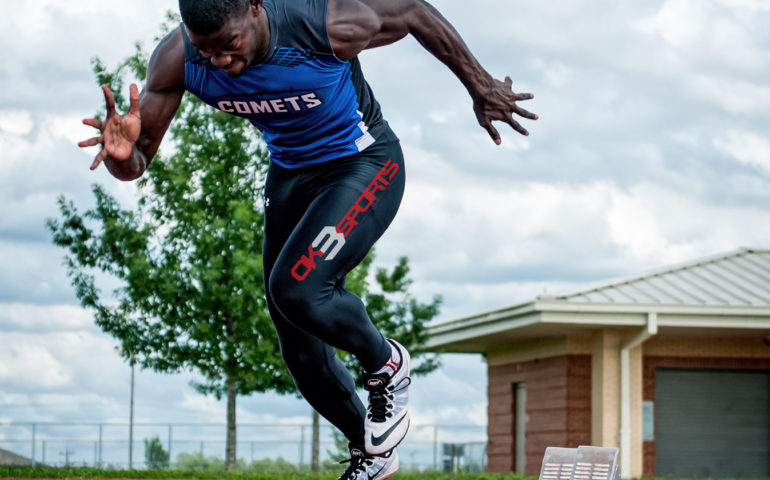By Charlie Adams on December 2016
Having studied college sports for many years, I feel strongly that multi-sport athletes make up the most competitive college athletes. However, we are in the heyday of “specialization.” Although most college coaches want multi-sport players, they are becoming fewer and farther between.
It wasn’t always this way
The 1980 Miracle on Ice U.S. Olympic hockey team beat the Soviets and then won gold. Sports Illustrated named it the greatest sports moment of the century. It was accomplished by a bunch of multi sport kids. You would think to beat the incredible Soviet hockey team of 1980 it would take a U.S. roster of kids that had done nothing but play hockey from the time they were little. Hardly the case. Team USA beat a Soviet team that had won the last 4 Olympics by outscoring opponents 175-44 AND that had destroyed the NHL All Stars 6-0 in 1979.
They did so with all kinds of multi-sport kids
Steve Janaszak was the backup goalie to Jim Craig. Before being 1st team All America goalie at the University of Minnnesota, Steve lettered in hockey, football, golf and soccer at Hill-Murray High School in St. Paul. That’s right, a 4-sport athlete.
Mike Eruzione made the biggest goal, run, hit, basketball or touchdown in United States sports history when he scored the winning goal in Team USA’s historic 4-3 over the Soviets on February 22, 1980. He was also a standout in baseball and football in high school in Winthrop, Massachusetts. He had more interest from D1 schools as a football player than a hockey player. Mike made plays, no matter what sport he played. He scored 3 goals in less than 2 minutes in the state hockey title game. In Tim Wendel’s book Going for the Gold, the author reveals that Mike built Three Cousins Field by their modest home while growing up. They competed fiercely in stick ball, basketball, football and street hockey with certain branches meaning home runs and trees for field goal posts.
Buzz Schneider scored the first goal in Team USA’s 4-3 win over the Soviets. Buzz was considered a better baseball player than hockey player at Babbitt High in Minnesota. He played quarterback, defensive back and was kicker on their football team. Buzz got a college baseball scholarship offer but signed with Minnesota, where he played both hockey and baseball his freshman year.
Eric Strobel led Minnesota high school hockey in scoring before going to the University of Minnesota and then making the Olympic team. Strobel, who coach Herb Brooks called the best pure skater he ever had, was also a standout baseball and football player at his Rochester, MN high school.
Bill Baker scored with :28 left in the opening Olympic game vs Sweden to salvage a 2-2 tie. Had Team USA lost that game it’s doubtful they would have ever made it to the medal round and the Soviet game. Besides playing hockey growing up, Baker was a tight end and defensive end on his high school football team and was a standout in baseball.
John Harrington liked playing high school football better than hockey.
Rob McLanahan was another 3-sport high school athlete, playing soccer and tennis as well as hockey. He got multiple D1 offers for tennis as well as hockey.
Jim Craig’s experience as a catcher in baseball helped him stop 36 of 39 Soviet shots the night of the 4-3 win. Growing up in North Easton, Massachusetts money was tight for the Craig family. He had to use a baseball catcher’s chest pad for awhile as a young hockey player until the family could save enough to but him hockey gear.
With 10 long minutes to go and the US up 4-3 over the Soviets, Mark Wells was assigned to shadow Valeri Kharlamov, who had it not been for injuries in a car accident later in his career could have been as good as Wayne Gretzkey. Wells was a ferocious competitor. While growing up near Detroit, part of his fire came from also playing baseball. Even though he was just 5’8″ he made it to the final round of the national Pitch, Hit and Run competition at Yankee Stadium. He came in second to a kid by the name of Orel Hershiser.
Coach Herb Brooks was an exceptional first baseman while also leading Johnson High in St. Paul to the 1955 state championship.
These guys should inspire all multi-sport athletes
The amazing accomplishment of 1980 was not won by kids who played travel hockey almost all year. It was not won with kids who specialized in hockey at an early age. It was won with 3-sport kids who became spectacular competitors because they played multiple sports. Because they were always playing different sports, they knew how to make plays and they truly knew how to competite.
In today’s world, kids face pressure to pick a sport at an early age and specialize. Is that the route to being the best they can be in college and beyond. Absolutely NOT! The proof is in the team that stands above all others in United States sports – the 1980 U.S. hockey team.

